 Lt. Shuho Kurita & the White Tiger , Imperial Japanese Army Air Force 1941-45
Lt. Shuho Kurita & the White Tiger , Imperial Japanese Army Air Force 1941-45 


Work In progress
Very little has been written in English about the airmen of Japan. It is unfortunate, as the Japanese air crews are little known or understood in the west. Even in their own country they have not recieved the recognition for their service as has their American and British counterparts. They fought with all the skill, courage and determination as exhibited by their opponents. I wish to thank Mr. Shuho Kurita and Mr. Toshiyuki Matsuura for sharing their families stories with me for this page.
Shuho Kurita was born in 1920. Like most young men in the 1930's, flying was a dream that he aspired to. In Japan vs. the west, there were fewer opportunities for a young man of Shuho's circumstances to learn to fly. Shuho and his friend Haruo Matsuura over came long odds to become fliers. They dreamed of becoming airline pilots. Trained in a civilian program not unlike flying programs started in other nations, Kurita-san was taken into the Army Airforce. As one of the few who served his nation during the entire war and survived, his is a unique perspective on one of the little known units that continued to operate to the very end of the war.
 Lt. Shuho Kurita was born in 1920 in a rural country town located in
Yamaguchi prefecture, western Japan. He is the third and
the last son of a Buddhist priest who was a head of the
small temple in the community of Kusunoki-machi, Asa-gun
(county), Yamaguchi Prefecture. ( to the east of Mine) Yamaguchi Prefecture is the westernmost prefecture on Honshu Island in Chugoku Region and is surrounded by the sea on three sides - namely the Sea of Japan on the north, the Sea of Hibikinada on the west, the Seto Inland Sea on the south - each of which offers its own beautiful scenery. In the inland area extends the karstic plateau, which represents Japan's well-known stalactic caves, gorges and natural parks with beautiful forests.
Lt. Shuho Kurita was born in 1920 in a rural country town located in
Yamaguchi prefecture, western Japan. He is the third and
the last son of a Buddhist priest who was a head of the
small temple in the community of Kusunoki-machi, Asa-gun
(county), Yamaguchi Prefecture. ( to the east of Mine) Yamaguchi Prefecture is the westernmost prefecture on Honshu Island in Chugoku Region and is surrounded by the sea on three sides - namely the Sea of Japan on the north, the Sea of Hibikinada on the west, the Seto Inland Sea on the south - each of which offers its own beautiful scenery. In the inland area extends the karstic plateau, which represents Japan's well-known stalactic caves, gorges and natural parks with beautiful forests.
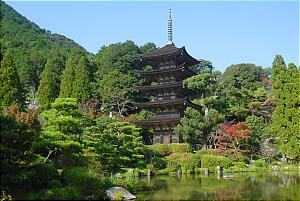
The capital of the prefecture is Yamaguchi City. Yamaguchi, known as Choshu in earlier times, played a leading role in over throwing the shogunate and bringing Japan's feudal era to an end. It is refered to by some as the "western Kyoto" It is the home of one of the most famous and beautiful temples in Japan the 5 storied Rurikoji Temple pagoda built in 1442.
Primary and Advanced Trainers in the Japanese Airforces
In 1938, the Government announced it was establishing a civilian pilot training program, fully supported by the Government. Being a developing country in the aeronautical field, Japan was in need to quickly train as many pilots as possible just like the Western countries.
Below from Kurita-sans collection are some of the trainers used by the Civilian Pilot Training facility at Yonago pilot traing school. The tail markings are that of the Postal Department.
 From Kuritas-san collection Ki-9 Basic trainers in the fall of 1939 at the Yongo Civil training school. These trainers have been maintained and are ready on the flight line. The Tachikawa Ki-9 Akatombo (Red Dragonfly)
Code Name: Spruce
Design Bureau: Tachikawa Hikoki K.K.
Manufacturer: Tachikawa Hikoki K.K.; Type: basic trainer
Crew: two
Engine: one Hitachi Ha-13a nine-cylinder air-cooled radial engine, rated at 350 hp
Max speed: 149 mph
Dimensions: wingspan 33 feet, 10 inches; length 24 feet, 8 inches; height 9 feet, 10 inches
Weight: empty 2,238 lbs; loaded 3,142 lbs
Armament: none
From Kuritas-san collection Ki-9 Basic trainers in the fall of 1939 at the Yongo Civil training school. These trainers have been maintained and are ready on the flight line. The Tachikawa Ki-9 Akatombo (Red Dragonfly)
Code Name: Spruce
Design Bureau: Tachikawa Hikoki K.K.
Manufacturer: Tachikawa Hikoki K.K.; Type: basic trainer
Crew: two
Engine: one Hitachi Ha-13a nine-cylinder air-cooled radial engine, rated at 350 hp
Max speed: 149 mph
Dimensions: wingspan 33 feet, 10 inches; length 24 feet, 8 inches; height 9 feet, 10 inches
Weight: empty 2,238 lbs; loaded 3,142 lbs
Armament: none
 Kurita-san: "This is a photo of instructor Tanaka. His famous words were, You young men will be flying very expensive airplanes with many passengers on board. You must always be honest in piloting. Do you understand? That is all.
Kurita-san: "This is a photo of instructor Tanaka. His famous words were, You young men will be flying very expensive airplanes with many passengers on board. You must always be honest in piloting. Do you understand? That is all.
Training is over for the day and this is a nice landing. Taken in the early winter of 1940."
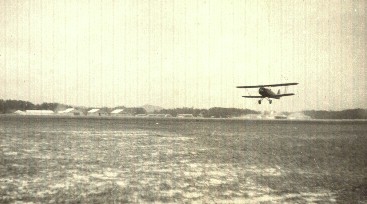
 Kurita-san: "The starter truck we used to start the engine for the primary trainer Ki-17 Type 95 model 3
Kurita-san: "The starter truck we used to start the engine for the primary trainer Ki-17 Type 95 model 3
Tachikawa Ki-17
Code Name: Cedar
Design Bureau: Tachikawa Hikoki K.K.
Manufacturer: Tachikawa Hikoki K.K.
Type: trainer
Crew: two
Engine: one Hitachi Ha-12 seven-cylinder air-cooled radial engine, rated at 150 hp
Max speed: 106 mph
Service Ceiling: 17,390 feet
Dimensions: wingspan 32 feet, 2.5 inches; length 25 feet, 7 inches; height 9 feet, 8 inches
Weight: empty 1,362 lbs; loaded 1,984 lbs
Armament: none
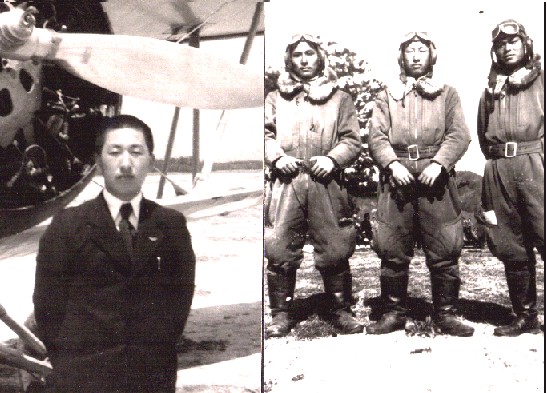 Kurita-san studied and learned flying at Yonago Civil Flying
School the same time as Haruo Matsuura. He also stayed on
at the school to work as assistant flying instructor like
Haruo. In Yonago city, Shuho Kurita, for a while, shared
boarding house with Haruo.
Shuho Kurita at left, Haruo Matsuura center and Yoneda at right as assistant instructors before the war and military service. Shuho Kuritas best friend in the prewar years was Haruo Matsuura pictured standing before a K-9 trainer. They often talked of being commercial pilots. Haruo would die in combat, only Shuho would be one of the few IJAAF airmen to survive the war and realize their dream.
Kurita-san studied and learned flying at Yonago Civil Flying
School the same time as Haruo Matsuura. He also stayed on
at the school to work as assistant flying instructor like
Haruo. In Yonago city, Shuho Kurita, for a while, shared
boarding house with Haruo.
Shuho Kurita at left, Haruo Matsuura center and Yoneda at right as assistant instructors before the war and military service. Shuho Kuritas best friend in the prewar years was Haruo Matsuura pictured standing before a K-9 trainer. They often talked of being commercial pilots. Haruo would die in combat, only Shuho would be one of the few IJAAF airmen to survive the war and realize their dream.
 Tachikawa Ki-55
Codename: Ida
Type: Two Seat Army Co-Operation & Advanced Trainer
Crew: Pilot &Trainee/Observer/Gunner sitting in tandem.
Design: Tachikawa Hikoki KK Design Team
Manufacturer: Tachikawa Hikoki Kabushiki Kaisha in Tachikawa
Powerplant: One 510 hp Hitachi Ha-13a 9-cylinder air-cooled radial engine.
Performance: Maximum level speed 216 mph at 5,905 ft. service ceiling 26,740 ft.
Range: 767 miles on internal fuel.
Weight: Empty 2,749 lbs with a maximum take-off weight of 3,660 lbs
Dimensions: Span 38 ft 8 1/2 in. length 26 ft 3 in. height 11 ft 11 1/4 in; wing area 215.29 sq ft
Tachikawa Ki-55
Codename: Ida
Type: Two Seat Army Co-Operation & Advanced Trainer
Crew: Pilot &Trainee/Observer/Gunner sitting in tandem.
Design: Tachikawa Hikoki KK Design Team
Manufacturer: Tachikawa Hikoki Kabushiki Kaisha in Tachikawa
Powerplant: One 510 hp Hitachi Ha-13a 9-cylinder air-cooled radial engine.
Performance: Maximum level speed 216 mph at 5,905 ft. service ceiling 26,740 ft.
Range: 767 miles on internal fuel.
Weight: Empty 2,749 lbs with a maximum take-off weight of 3,660 lbs
Dimensions: Span 38 ft 8 1/2 in. length 26 ft 3 in. height 11 ft 11 1/4 in; wing area 215.29 sq ft
 Kurita-san: "Instructors and assistants at Yonago. The Civil Pilot training school members taking a break after lunch. The training subject was "landing at a rough field" Lt. Kurita took this photo, 4th from the left is the instructor Tanaka and the rest are all assistants 18 to 21 years old. This photo was taken in the fall of 1939 "
Kurita-san: "Instructors and assistants at Yonago. The Civil Pilot training school members taking a break after lunch. The training subject was "landing at a rough field" Lt. Kurita took this photo, 4th from the left is the instructor Tanaka and the rest are all assistants 18 to 21 years old. This photo was taken in the fall of 1939 "
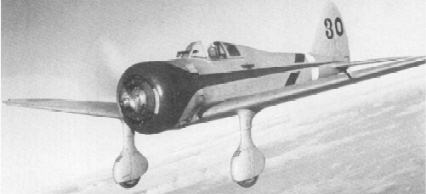 Nakajima Ki-27 (Code names Nate)
Type:
Single-seat fighter, all-metal construction, fabric-covered control surfaces.
Crew 1 Pilot,
Powerplant:
One Nakajima Ha-1a nine-cylinder air-cooled radial engine, rated at 710 hp for take-off and 650 hp at 6,560 ft.
Armament:
Two fuselage-mounted 7.7mm machine guns.
Dimensions, weights, and performance:
Wingspan, 37 ft. 1 ¼ in.;
length, 24 ft. 8 7/16 in.;
height, 10 ft. 7 15/16 in.;
wing area, 199.777 sq. ft.;
empty weight, 2,447 lb.;
loaded weight, 3,946 lb.;
wing loading, 19.75 lb./sq. ft.;
maximum speed, 292 mph at 11,480 ft.;
climb to 16,405 ft., 5 min. 22 sec.;
normal range, 390 miles;
maximum range, 1,060 miles.
Nakajima Ki-27 (Code names Nate)
Type:
Single-seat fighter, all-metal construction, fabric-covered control surfaces.
Crew 1 Pilot,
Powerplant:
One Nakajima Ha-1a nine-cylinder air-cooled radial engine, rated at 710 hp for take-off and 650 hp at 6,560 ft.
Armament:
Two fuselage-mounted 7.7mm machine guns.
Dimensions, weights, and performance:
Wingspan, 37 ft. 1 ¼ in.;
length, 24 ft. 8 7/16 in.;
height, 10 ft. 7 15/16 in.;
wing area, 199.777 sq. ft.;
empty weight, 2,447 lb.;
loaded weight, 3,946 lb.;
wing loading, 19.75 lb./sq. ft.;
maximum speed, 292 mph at 11,480 ft.;
climb to 16,405 ft., 5 min. 22 sec.;
normal range, 390 miles;
maximum range, 1,060 miles.
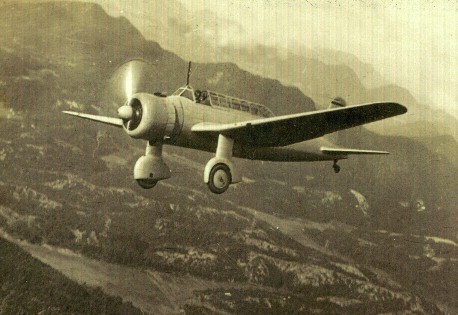 Kurita-san: "Training at Kagamigahara Air Base from December 1940 to March 1941 using active warplanes. We used the Type 97 light bomber for the training. "
Kurita-san: "Training at Kagamigahara Air Base from December 1940 to March 1941 using active warplanes. We used the Type 97 light bomber for the training. "
 Kurita-san: "A photo at right taken as I was coming home from training. This was a safe landing with a student and thank god it was safe again today. The shot was taken with my camera by my colleague, assistant instructor Kano. The photo was taken in the fall of 1939."
Kurita-san: "A photo at right taken as I was coming home from training. This was a safe landing with a student and thank god it was safe again today. The shot was taken with my camera by my colleague, assistant instructor Kano. The photo was taken in the fall of 1939."
 Kurita-san: "The instructor seen here at the left is no less than Rokuzo Katoh, later he joined the Army and was attached to the famous 64th Sentai. He was killed on January 17th 1942 in the skies of Sumatra. Students from the left are: Nishida (survived the war and lives in Yonago City.), Matsuoka (killed on active service Harbin Manchuria), Udono (survived the war and went to work for JAL post war), Hinohara (killed on active service over the China Sea) , Koyashiki (survived the war and lives in Kuyushu.)
Kurita-san: "The instructor seen here at the left is no less than Rokuzo Katoh, later he joined the Army and was attached to the famous 64th Sentai. He was killed on January 17th 1942 in the skies of Sumatra. Students from the left are: Nishida (survived the war and lives in Yonago City.), Matsuoka (killed on active service Harbin Manchuria), Udono (survived the war and went to work for JAL post war), Hinohara (killed on active service over the China Sea) , Koyashiki (survived the war and lives in Kuyushu.)
DEPARTURE FOR THE FRONT
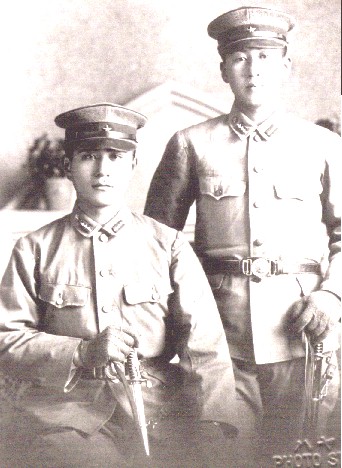 Lt. Shuho Kurita at left Lt. Haruo Matsuura standing at right. Wearing their apprentice Army uniforms Shuho and his best friend Haruo had a memorial photo taken at a photo studio in Kumamoto, Kyushu, in May of 1941. Shuho Kurita is sitting and Haruo is standing. Kurita-san joined the army the same time Haruo did and
they were together in moving around from one air base to another
until the final training at Kumamoto.
Lt. Shuho Kurita at left Lt. Haruo Matsuura standing at right. Wearing their apprentice Army uniforms Shuho and his best friend Haruo had a memorial photo taken at a photo studio in Kumamoto, Kyushu, in May of 1941. Shuho Kurita is sitting and Haruo is standing. Kurita-san joined the army the same time Haruo did and
they were together in moving around from one air base to another
until the final training at Kumamoto.
 Prior to WWII western powers especially in the United States belittled the abilities of Japan as imitators unable to produce advanced aircraft or skilled aircrew. This 1941 article in Flying and Popular Aviation magazine indicates the prevailing feeling. Allied aircrews were in for a rude awakening, with fighter aircraft like the Ki-43 and others developed later in the war proving the equal of any allied designs. (Pre War Article Link)The Japanese were told their western opponents were materialistic, soft, would not stand up the Japanese fighting spirit and the war with them would end quickly. Both sides airmen entered the war completely underestimating the others abilities and resolve.
Prior to WWII western powers especially in the United States belittled the abilities of Japan as imitators unable to produce advanced aircraft or skilled aircrew. This 1941 article in Flying and Popular Aviation magazine indicates the prevailing feeling. Allied aircrews were in for a rude awakening, with fighter aircraft like the Ki-43 and others developed later in the war proving the equal of any allied designs. (Pre War Article Link)The Japanese were told their western opponents were materialistic, soft, would not stand up the Japanese fighting spirit and the war with them would end quickly. Both sides airmen entered the war completely underestimating the others abilities and resolve.
The ASAHI GRAPH, Showa 17 (1940), Dec. 16. shows how the Japanese held American mass production in contempt as the cartoon illustrates, screws are falling out and the americans planes fall apart in the air.
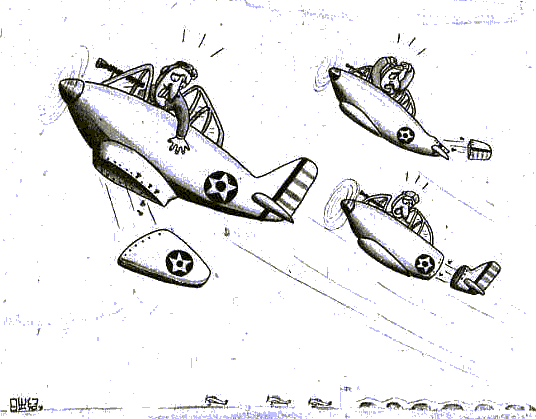
Kurita-san recieved his assignment for the Kumagaya Army Flying School
(suburb of Tokyo) as an instructor to train young
flyer-to-be as army pilots. After two months, he was transferred
to the Army Air Transportation Command,
Tachikawa Sub Department who's responsibility was airplane ferrying
duty to the far flung outposts of the Japanese Empire.
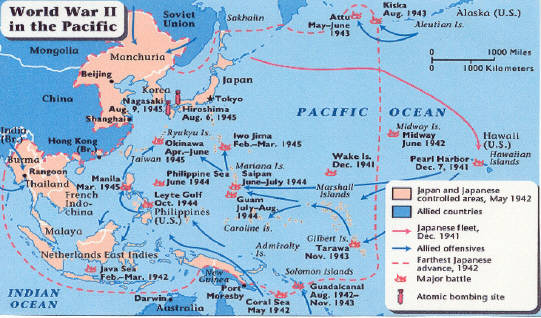
Kurita-san ferrying and evacuation flights took him from Japan to Manchuria, Malaya, Taiwan and the Phillipines.
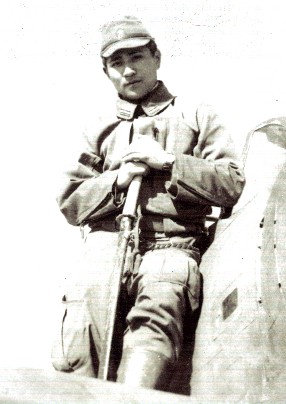 A photo of Lt. Shuho Kurita after he landed at Tachiarai for refueling en route to ferry a KI-43 from Tachikawa to Kuangtung, China in the winter of 1942. The KI-43 surprised the Allies. Often mistakenly called a Zero by the allied pilots who came up against it in South East Asia, it outclassed the Buffalo, P-40 Warhawk and Hurricanes in manuevarability and range. What it lacked was pilot protecting armor, self sealing fuel tanks and heavy enough machine guns. Allied tactics required them to use their heavier fighters in a diving pass, hit and run tactic. They were told to never mix it up with these aircraft.
A photo of Lt. Shuho Kurita after he landed at Tachiarai for refueling en route to ferry a KI-43 from Tachikawa to Kuangtung, China in the winter of 1942. The KI-43 surprised the Allies. Often mistakenly called a Zero by the allied pilots who came up against it in South East Asia, it outclassed the Buffalo, P-40 Warhawk and Hurricanes in manuevarability and range. What it lacked was pilot protecting armor, self sealing fuel tanks and heavy enough machine guns. Allied tactics required them to use their heavier fighters in a diving pass, hit and run tactic. They were told to never mix it up with these aircraft.

 Kurita-san: "Ferrying Ki-43's from Sadohara to Peitung, Taiwan. I took a shot of my wingman, Hasegawa, over Amami-ohsima under a clear sky on day in 1943. Hasegawa, on May 24th, 1945, force landed on Kadena Airfield, Okinawa on a Tokkotai mission 'GIRETSU KUTEITAI'
carrying shock troops on his KI-21 Bomber. I pray for comrade Hasegawa.
Kurita-san: "Ferrying Ki-43's from Sadohara to Peitung, Taiwan. I took a shot of my wingman, Hasegawa, over Amami-ohsima under a clear sky on day in 1943. Hasegawa, on May 24th, 1945, force landed on Kadena Airfield, Okinawa on a Tokkotai mission 'GIRETSU KUTEITAI'
carrying shock troops on his KI-21 Bomber. I pray for comrade Hasegawa.
[This mission was partially successful as the troops that survived the crash landings destroyed aircraft, fuel and some installations before being wiped out by the defenders.]
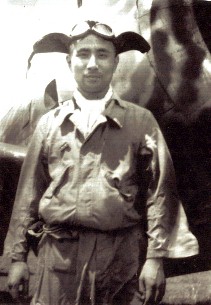
 Lt Suhuo Kurita Photographed in front of a Ki-43, model 3 at Kuangtung, China, in the summer of 1944. Nakijima Ki-431b
Lt Suhuo Kurita Photographed in front of a Ki-43, model 3 at Kuangtung, China, in the summer of 1944. Nakijima Ki-431b
Allied Codename: Oscar
Type: Single Seat Fighter & Fighter Bomber
Powerplant: One 1,150 hp (858 kw) Nakajima Ha-115 14-cylinder radial piston engine.
Performance: Maximum speed 329 mph (530 km/h) at 13,125 ft (400 m); cruising speed 273 mph (440 km/h); service ceiling 36,745 ft (11200 m).
Range: 1,988 miles (3200 km) with external fuel stores.
Weight: Empty 4,211 lbs (1910 kg) with a maximum take-off weight of 5,710 lbs (2590 kg).
Dimensions: Span 35 ft 6 3/4 in (10.84 m); length 29 ft 3 1/4 in (8.92 m); height 10 ft 8 3/4 in (3.27 m); wing area 230.36 sq ft (21.40 sq m).
Armament: Two 12.7 mm (0.50 in) forward firing machine guns, plus two bombs up to 551 lbs (250 kg) in weight on underwing racks.
Variants: Ki-43 (prototype), Ki-43-1a (Army type I Fighter Model 1A Hayabusa production aircraft) , Ki-43-1b, Ki-43-1c, Ki-43-II (five prototypes for evaluation), Ki-43-11a (production aircraft), Ki-43-11b, Ki-43-11 KAI, Ki-43-111a (prototype with a more powerful engine), Ki-43-111b (proposed interceptor with only cannon but it never entered service).
Operators: Japanese Army, Thailand.
Kurita-sans favorite plane.
The profile drawing of the Ki-67 Hiryu is reproduced with thanks from -
"Combat Aircraft of World War II" by Bill Gunston (Spring/Salamander, London 1978 see link)

The Ki-67 Hiryu ( Flying Dragon ) Allied Code Name (Peggy) was an answer to an army specification for more survivable bomber and went into production in 1944. It was extremely maneuverable, and faster than any other similar Japanese bomber with armour with self sealing fuel tanks. Many considered it to be the best bomber the Japanese fielded during the war. Just under 700 were built by wars end. Kurita-sans was a fast transport version and was still defensively armed. His tiger motif was fitting as his missions were far flung over great expanses of water to the edges to the then Japanese Empire. "The tiger roams 1000 miles and always returns home safely"
 Ki-67-I: Wingspan, 73 ft. 9 13/16 in.;
length, 61 ft. 4 7/32 in.;
Ki-67-I: Wingspan, 73 ft. 9 13/16 in.;
length, 61 ft. 4 7/32 in.;
height, 25 ft. 3 5/32 in.;
wing area, 708.801 sq. ft.;
empty weight, 19,068 lb.;
loaded weight, 30,347 lb.;
wing loading, 42.8 lb./sq. ft.;
power loading, 8 lb./hp;
maximum speed, 334 mph at 19,980 ft.;
cruising speed, 249 mph at 26,245 ft.;
climb to 19,685 ft. in 14 min. 30 sec.;
service ceiling, 31,070 ft.;
normal range, 1,740 miles; maximum range, 2,360 miles.
Though described as a "heavy" bomber, it can be considered the equivalent of American medium bombers like the B-25 and 26 though larger, and with much better performance and range. Had the war gone on any longer, highly experienced pilots and crews like Kurita-sans would have been sent into the final battles to hold off the invasion fleets.
 A weapon Lt. Kuritas KI-67 may have been armed with was an antiship missle. The Ki-147 Igo-A-1: was a large radio-guided missile was being designed late in the war specifically to be launched from the Ki-67. With a 800Kg warhead its impact would have been devastating. The program was dropped early in 1945 to concentrate the limited resources Japan had left on fighter production to combat the B-29 raids. A new missle variant was under development as the war ended. The KI-67 was also being used as a airborne radar ship. The land based radars Japan utilized were not very effective in detecting inbound raids at certain altitudes and ranges. The Japanese however were very effective in utilizing the undisciplined American radio chatter in predicting with a high degree of accuracy the timing and target on inbound raids.
A weapon Lt. Kuritas KI-67 may have been armed with was an antiship missle. The Ki-147 Igo-A-1: was a large radio-guided missile was being designed late in the war specifically to be launched from the Ki-67. With a 800Kg warhead its impact would have been devastating. The program was dropped early in 1945 to concentrate the limited resources Japan had left on fighter production to combat the B-29 raids. A new missle variant was under development as the war ended. The KI-67 was also being used as a airborne radar ship. The land based radars Japan utilized were not very effective in detecting inbound raids at certain altitudes and ranges. The Japanese however were very effective in utilizing the undisciplined American radio chatter in predicting with a high degree of accuracy the timing and target on inbound raids.
 What Lt. Kurita describes as his last photo of loving friend. KI-67 type 4 heavy bomber the White Tiger.
What Lt. Kurita describes as his last photo of loving friend. KI-67 type 4 heavy bomber the White Tiger.
Kurita-san: "I flew this plane mainly to evacuate command staff officers. Its high performance radial engines with cooling fans made a light and comfortable sound. You can distinguish the plane anywhere from its sound."
Kurita-san ferried 21 different types of airplanes, out
to Soul, and Pyongyang Korea, Shengyang (Manchuria), Beijin,
Shanghai, Kuangton, in China, Saigon in Vietnam, Singapore in Malaya, Java, Sumatra in the Dutch East Indies, various bases in the
Philippines and Taiwan.
When asked what was you most memorable mission, Kurita-san related the following.
Kurita-san: ''I encountered the true American Bushido''
 January
23, 1945, all my air crew gathered in the air raid shelter of our
base under the weakly shining bare light bulbs, awaiting
for the order for the mission we were about to start. A staff officer explained that our Fourth Air Force in
the Philippines had been driven into a corner by fierce enemy
counter attacks, and the headquarters staffs are keenly
awaiting to be rescued
at Laoag, on the west coast of Northern Luzon. The officer continued 'There is
no radio communication with Laoag and no detail information
available, but we must carry out this mission no matter
what.' This means a 'Kamikaze rescue' as we may have to
land right in the middle of
the enemy surrounded airfield. The staff officer concluded
his explanation, and order, by saying 'You may have to
force land your plane at Laoag airfield. Do accomplish
the mission at all cost.'
January
23, 1945, all my air crew gathered in the air raid shelter of our
base under the weakly shining bare light bulbs, awaiting
for the order for the mission we were about to start. A staff officer explained that our Fourth Air Force in
the Philippines had been driven into a corner by fierce enemy
counter attacks, and the headquarters staffs are keenly
awaiting to be rescued
at Laoag, on the west coast of Northern Luzon. The officer continued 'There is
no radio communication with Laoag and no detail information
available, but we must carry out this mission no matter
what.' This means a 'Kamikaze rescue' as we may have to
land right in the middle of
the enemy surrounded airfield. The staff officer concluded
his explanation, and order, by saying 'You may have to
force land your plane at Laoag airfield. Do accomplish
the mission at all cost.'
The setting sun in my window, my loving Ki-67 'White
Tiger' cruised southward over the Bashi Channel at very low
altitude, almost with a splash of water on my wing tip. Looking at
the west, watching the beautiful southern sun set into South
China Sea, it was hard to believe there was a bloody war
on this pretty earth.
Though there have been many situations where I thought of
getting killed, I thought today is the day that I will
finally have to go. My veteran engineer,
intrepid-spirited Warrant Officer Inoh, shouted 'Men, it's about the
time our American friends to show up. Get your balls tight.'
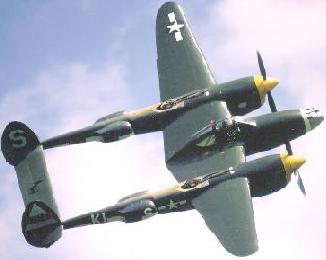 A P-38 Lightning.
A P-38 Lightning.
Continuing in low altitude flight, we reached land from the
Northern tip of Luzon. So low was our altitude we were ripping
coconut leaves with my wings, as we were fearing to find enemy planes.
The low altitude flying was also so we wouldn't be caught by enemy
radar. The rosy-cheeked young gunner of our crew
positioned at upper turret reports 'No enemy in sight'
with high pitched boyish voice thru the voice tube. We landed at
enemy surrounded Laoag field taking a chance to find an unguarded moment
by the patrolling P-38. It was greenish ranch-like airfield.
 With a small rising-sun flag in their hands, soldiers
started to appear from no where. Slowly taxiing as we had
no knowledge of the airfield's condition, the plane
suddenly stopped with a big noise, GOT-TAN. With engine
power up the plane doesn't even move! The plane's main gear
dropped into a crater and cannot move. The more we tried to move the
worse it got. If we keep trying we may end up in damaging
the propellers and we will never be airborne. We shut off the
engine and Warrant Officer Inoh and I got off the plane and found that
our right main landing gear sank into the crater made by an earlier
strafing attack.
With a small rising-sun flag in their hands, soldiers
started to appear from no where. Slowly taxiing as we had
no knowledge of the airfield's condition, the plane
suddenly stopped with a big noise, GOT-TAN. With engine
power up the plane doesn't even move! The plane's main gear
dropped into a crater and cannot move. The more we tried to move the
worse it got. If we keep trying we may end up in damaging
the propellers and we will never be airborne. We shut off the
engine and Warrant Officer Inoh and I got off the plane and found that
our right main landing gear sank into the crater made by an earlier
strafing attack.
One of the ground soldiers came up to me and said 'Sir
Lt, the black smoke you see over there is the Navy plane that
came to rescue us not too long ago and got shot down by an
enemy plane. The enemy planes left only a few minutes
ago. You must hurry before they come back again.'

[ The Japanese Naval Bomber/Transport Mitsubishi G4M (KI-67 Hiryu's Counter part may have been the victim that day ]
Being
on an grass airfield where we were losing the battle, there is no way you
can find ropes and equipment to pull the plane out of the
crater. Soldier after soldier, came out to help us pull
out the planes landing gear from the crater. All the soldiers looked
half dead with apparent malnutrition, and were wearing rags.
We just had to rescue the plane before rescuing anybody,
or we won't get back to Taiwan. We tried desperately with
all our might to pull out the plane.
Though almost unthinkable, we pulled the heavy Ki-67 out from
the crater.
Brooonn, suddenly breaking the silence, a strange engine
sound became audible. The sound is heard coming from
west. 'Bogie ..., take cover' There is no air raid
shelter, not even trenches. We all threw ourselves flat
on the ground. The scarlet colored sun in her back, the plane is
getting closer to us. The time has come, the desperate
moment is here with us. Holding the breath, wondering
when they will start to open fire. In that moment, all the
fond memories of the good old days flashed back to me. My
short but wonderful 24 years of life is now ending. Yet,
I still had to look who is taking my life. I saw a large
beautiful flying boat. Too beautiful to be enemy plane.
No, it couldn't be our enemy.
 A Consolidated PBY Catalina
All of a sudden, the pilot of the flying boat opened the
window and started to wave his hand at us. A red face
with oval sunglasses. It was my very, very first time to
look at an American pilot, and at this close distance. No, it
couldn't happen, this is the real battle ground, kill
or be killed. I ordered my rear gunner not to shoot. The
gunner shouted 'please Lt, let me shoot. It's the bogie.'
I repeated my order not to shoot. The gunner,
reluctantly, gave up.
A Consolidated PBY Catalina
All of a sudden, the pilot of the flying boat opened the
window and started to wave his hand at us. A red face
with oval sunglasses. It was my very, very first time to
look at an American pilot, and at this close distance. No, it
couldn't happen, this is the real battle ground, kill
or be killed. I ordered my rear gunner not to shoot. The
gunner shouted 'please Lt, let me shoot. It's the bogie.'
I repeated my order not to shoot. The gunner,
reluctantly, gave up.
I took my white scarf off the neck and waved at the
American pilot saying 'thank you, thank you for not taking
our lives.' I knew he couldn't hear it, and couldn't
understand what I was saying, anyway. I just had to say
it. W/O Inoh said 'Lt. the enemy guys do some crazy things,
too, don't they' in his native Kyushu dialect. Warrrant Officer Inoh,
naturally, felt relieved also, I believe.
Finding a meat ball Japanese plane has somehow smuggled his way into Laoag through
heavy patrol lines of U. S. forces, and somehow got into
trouble, the pilot of the flying boat, I believe, decided
to give us a break. Banking his wings, the flying boat went
away. It was a real eye-blinking moment happening. We
feared that enemy planes may come back again if we don't
hurry and take off. With a group of 20 odd board, I took off from Laoag and headed north over the moonlit
Bashi channel back to Peitung the fires of an air raid that was burning the city
serving as a guide.
Almost six decades from the day in Laoag, had the
Captain of the flying boat sent a wire back to the base at
that time, telling 'A bogie standing still at Laoag. Send
fighters to finish it.' we would have been attacked, the plane
smashed, and we either would have lost our lives or committed suicide
after wandering Luzon mountains, or even died from
starvation.
There is a famous history in Japan where a
Samurai lord presented supply of salt to hostile war lord.
'To Help Frailty is a Virtue.' This is the teaching of
Japanese Samurai, and we saw the spirit in the American
soldier. This was an unforgettable incident at Laoag,
Philippines, it kept me alive until today to spend peaceful
happy life.
 The flying boat, I believe, is either Consolidated PBY
Catalina, or Privateer. A few years ago, I had a U. S.
Navy pilot friend of mine, aboard USS Independence, check
to find the Captain of the flying boat thru U. S. Navy
Veterans Association, but there was no success. I'm
longing to find the chance to say, 'Thank you for saving
my life.'
The flying boat, I believe, is either Consolidated PBY
Catalina, or Privateer. A few years ago, I had a U. S.
Navy pilot friend of mine, aboard USS Independence, check
to find the Captain of the flying boat thru U. S. Navy
Veterans Association, but there was no success. I'm
longing to find the chance to say, 'Thank you for saving
my life.'
It is possible the aircraft was from FAW-10. They had relocated from Perth to Los Negros in the Admiralty Islands on 1 September 1944. FAW-10 then relocated to Leyte, in the Philippines on 17 October 1944 and operated from the tender vessel Currituck (AV 7). On 30 November 1944, FAW-10 relocated to Jinamoc Island in the Philippines where it was based on shore.
On 15 December 1944, FAW-10 relocated to Tacloban in the Philippines and then on 14 April 1945 they relocated to Puerto Princess, Palawan. FAW 10 Consisted of VPB 20, with 9 PBM3D's on Leyte, VPB 25, with 13 PBM3D's on Leyte, VPB 54 with 9 PBY 5a's on Leyte and VPB 117 with 15 PBY4 1's on Leyte. VPB 130 with 1 PV1 Harpoon.
AIRCRAFT USED BY FLEET AIR WING 10 & 17
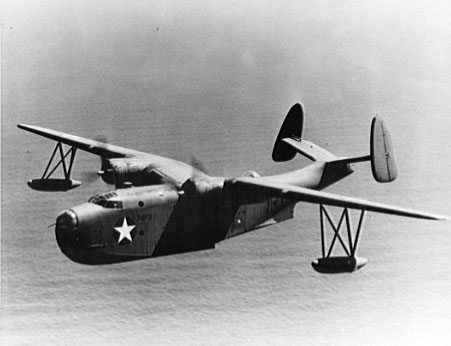
PMB3 Mariner
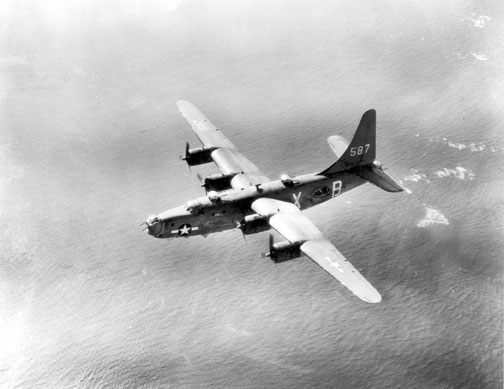
PB4Y Privateer

PBY Catalina

PV1 Harpoon
Until I hear from Kurita-san again the most likley candidate looks to be VPB-54 - The Luzon, Philippine Island Invasion on January 10th saw the planes of VPB-54 operating from a converted DE the U.S.S. Orca (AVP-49) to act as our seaplane tender in Lingayen Gulf. The Orca took on Navy night patrols into the China Sea. Several times the Japanese tried to blow up the U.S.S. Orca by planting explosives under the fan-tail of the ship. Refusing to surrender, they were destroyed with 20mm cannon fire from the ship. Between January 10th and February 15th, many flights were made throughout the northern part of Luzon ferrying food supplies, guns and ammo to the Guerrillas. Dumbo missions were flown for the 5th Air Force strikes on Formosa. Several invasions were covered around the Corregidor and Manila Bay area. Dumbos were flown to LaPaz; Subic Bay, and Polillio Island.
The only other Naval unit with PBYs in the area on that day were. FAW 17 it operated VPB33 with 5, PBY-5s and also VPB 104 with 2 PBY4 1's also on Leyte.
Many thanks to MICdrow of the WW2 aircraft forum for sharing his copies of declassifiend documents listing the locations of air units in the Pacific on that date.
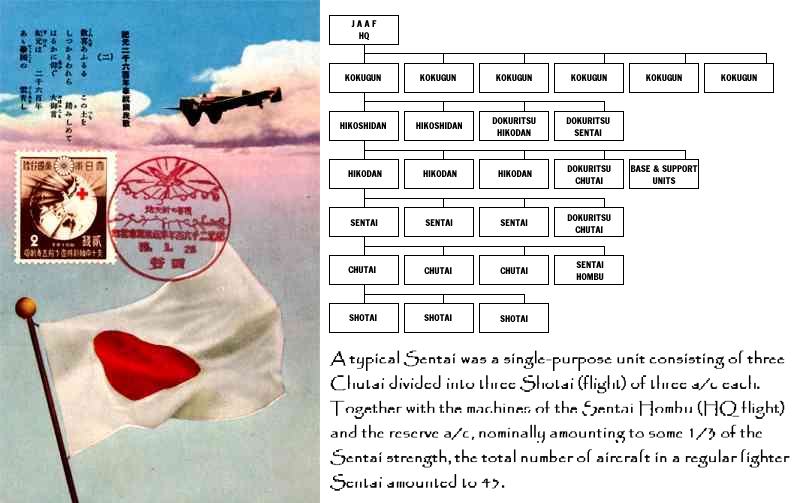
A Japanese Air Force commemorative postcard (Courtesy of VintagePostcards.com) and the Command Structure of the IJAAF the prime unit being the Sentai.
The White Tiger. Ki-67 enroute from Peitung, Taiwan, to Tachiarai, Kuyushu via Shanghai China.
 [ Shortly before Kurume a road turns off to Tachiarai, today it is a sleepy town surrounded by rice fields and lush hills. The former site of the Tachiarai Air Force Base, thousands of pilots and other air force personnel were trained here before being sent to wars in Manchuria and the Pacific. Although the base was destroyed in B-29 bombing raids in April 1945, its name lives on as one of the places from which dozens of kamikaze missions were dispatched. A Kirin brewery stands on the original site today, but you can catch a vivid glimpse of history at nearby Tachiarai Peace Memorial. The memorial houses a small but diverse collection of materials. But the curators have tried hard not to glorify war, focusing instead on the countless lives that were lost. The displays of letters, photos and personal belongings of the barely adult pilots are incredibly touching. You can also see fascinating original U.S. reconnaissance photos, secret files regarding the attacks on the base that Kurita-san experienced first hand, a well-preserved "akatombo" practice biplane, and more. Recently, a 97-type fighter plane was added to the collection, after being discovered 2 years ago in Hakata Bay and restored.
The Nakajima Ki 27 "Nate" at the Tachiarai Peace Memorial Museum Link
[ Shortly before Kurume a road turns off to Tachiarai, today it is a sleepy town surrounded by rice fields and lush hills. The former site of the Tachiarai Air Force Base, thousands of pilots and other air force personnel were trained here before being sent to wars in Manchuria and the Pacific. Although the base was destroyed in B-29 bombing raids in April 1945, its name lives on as one of the places from which dozens of kamikaze missions were dispatched. A Kirin brewery stands on the original site today, but you can catch a vivid glimpse of history at nearby Tachiarai Peace Memorial. The memorial houses a small but diverse collection of materials. But the curators have tried hard not to glorify war, focusing instead on the countless lives that were lost. The displays of letters, photos and personal belongings of the barely adult pilots are incredibly touching. You can also see fascinating original U.S. reconnaissance photos, secret files regarding the attacks on the base that Kurita-san experienced first hand, a well-preserved "akatombo" practice biplane, and more. Recently, a 97-type fighter plane was added to the collection, after being discovered 2 years ago in Hakata Bay and restored.
The Nakajima Ki 27 "Nate" at the Tachiarai Peace Memorial Museum Link
Tachiarai Under B-29 Attack

Kurita-san: " In 1945, bombardment by the B-29's became fiercely heavy,
particularly at night, and bombing and strafing by carrier
based planes such as Grummans, and P-51's from Iwo Jima,
became almost like daily runs. It was difficult to find a
day without air raid.


Japanese home defense air power, by then, had dropped
tremendously so that occasionally only a few fighters took
off to fight against those unmatchingly powerful U S
planes.
Under such a desperate situation, ferrying missions were
kept to a very small scale. There were a few times where
planes being ferried encountered enemy planes.
On April 29, 1945 on a return trip from Peitung, Taiwan, to evacuate staff officers
to Japan, I was flying at very low altitude to check
to see the runway condition at Tachiarai. At that time,
radio was sealed ( radio silence) so that we had to visually see if the
runway was safe. All of a sudden, a large flight
formation of B-29's started to drop bombs and the airfield
became full of roaring flames.
 With a strong blast, I
thought for a minute that I lost two engines on my Ki-21.
Seconds later I found both engines were running safely. I
immediately passed through, with very very low altitude,
between the mountains east of the airfield and flew toward
Gan-nosu airfield for emergency landing. Just as quickly
as I landed, I opened the hatch, got out of the plane and
jumped into the trench.
With a strong blast, I
thought for a minute that I lost two engines on my Ki-21.
Seconds later I found both engines were running safely. I
immediately passed through, with very very low altitude,
between the mountains east of the airfield and flew toward
Gan-nosu airfield for emergency landing. Just as quickly
as I landed, I opened the hatch, got out of the plane and
jumped into the trench.
One of the staff officers we evacuated on our plane
(it was Ki-21, Sally, at that time) had sacks
full of sugar with him, as a personal belonging. It made
me very upset as sugar was very scarce in homeland
at the time and the people were suffering. I couldn't say 'boo' about it. The staff officer pulled
rank to get his way.
[ The Ki-21 was the prime bomber for the Army Air force up to 1944. With newer allied fighters in 1943 onwards it became a death trap and many of the most experiencd crews were lost before the Ki-67 became available. Some were converted freight transports modified from a Ki-21-I and used by Greater Japan Airlines to fly cargo between Manchuria, China, and Japan. ]
The Transportation Command that
Kurita-san was assigned had mostly ferrying missions early
in the war, taking fighter planes, assault planes (such as
K-51), reconnaissance planes,and others down South for replacing
equipment lost by the Sentais. However, towards the end of
the war the missions were mostly to evacuate people,
in most cases high-ranking officers.
 Kurita-san: "In april 1945 our crew photographed after a stop at Tachiarai for refueling on our way home to Ohta from Peitung Taiwan. From the left is Seto, Hosoya, Itoh and Kurita.
Kurita-san: "In april 1945 our crew photographed after a stop at Tachiarai for refueling on our way home to Ohta from Peitung Taiwan. From the left is Seto, Hosoya, Itoh and Kurita.
Lt Suhuo Kurita flying over the East China Sea en route to Nyutabaru. He is bringing home a Ki-67 from Taipei ( Taiwan) to Ohta airbase in 1944. The White Tiger. Ki-67 enroute from Peitung, Taiwan, to Tachiarai, Kuyushu via Shanghai China.
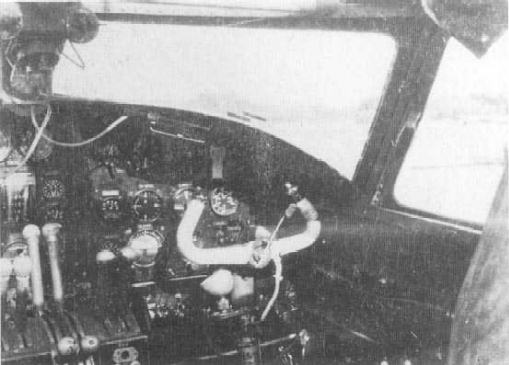
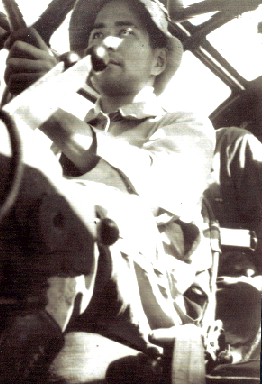
 Japans Air Force commanders during the war years commemorative postcard (Courtesy of VintagePostcards.com)
Japans Air Force commanders during the war years commemorative postcard (Courtesy of VintagePostcards.com)
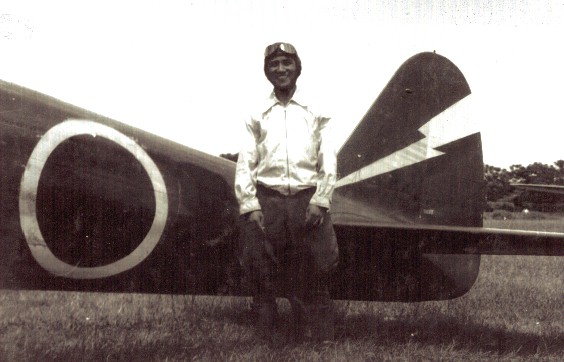 Kurita-san: "I had my photo taken in front of Lt. Hinokis glorious plane. The famous Lt Hinoki of the 64th Sentai flew into Peitung Air Force Arsenal for repair of his KI-43
Kurita-san: "I had my photo taken in front of Lt. Hinokis glorious plane. The famous Lt Hinoki of the 64th Sentai flew into Peitung Air Force Arsenal for repair of his KI-43
 Kurita-san: "My senior pilot officer was Lt. Oda. He was attached to the Kagamigahara Transport Command, and later transferred to Tachikawa. Lt. Oda, in fact was the person who led me to Japan Airlines after the war. This photo was taken of him in a Ki-61 in early 1944.
Kurita-san: "My senior pilot officer was Lt. Oda. He was attached to the Kagamigahara Transport Command, and later transferred to Tachikawa. Lt. Oda, in fact was the person who led me to Japan Airlines after the war. This photo was taken of him in a Ki-61 in early 1944.
 Kurita-san: "My Colleague and friend Haruo who died in Malaya in early 1942. This was taken in the winter of 1940 with my old bellows type camera given to me by my uncle. "
Kurita-san: "My Colleague and friend Haruo who died in Malaya in early 1942. This was taken in the winter of 1940 with my old bellows type camera given to me by my uncle. "
 Lt Suhuo Kurita in his Army Officers uniform before checking into the Army Officers quarters in Pyongyang Korea en route from Tachikawa to Shengyang Manchuria ferrying a Ki-54 Type 1 twin engined advanced trainer in December 1942.
Lt Suhuo Kurita in his Army Officers uniform before checking into the Army Officers quarters in Pyongyang Korea en route from Tachikawa to Shengyang Manchuria ferrying a Ki-54 Type 1 twin engined advanced trainer in December 1942.
Kurita-san out look on life comes from his buddhist tradition. His out look on the close calls during the war are indicated by this philospophy.
Kurita-san: "A human being cannot die as long as there is a fatal thread
in your hands. When the time comes, one will die whether
you like it or not. One should not deal with life and
death. This, I found, is a truth of life, and is a
valuable teaching."
Kurita-san's last base was Ohta Airfield located
adjacent to Nakajima Aircraft Factory (used by both
Japanese Army and Imperial Navy.) His last mission was in the early part of August, 1945 with his war ending he had to help decomission the aircraft remaining on the field.
At this field the two extremes of Japanese avaition were produced.

The Kikka was a Japanese Jet fighter. Many people mistakenly consider it a copy of the ME262 and though it was inspired by the ME-262 it was a different plane. The Ki-115 Tsuargi was a purpose built Kamikaze designed to take advantage of available engines and the simplest of construction techniques. It was meant for a one way trip but it turned out too difficult to fly for even an experienced pilot.
Kurita-san: "I wasn't aware of those newly developing planes as
had not much chance of seeing the plant. Rather, we
were busy in carrying out our missions of ferrying planes
and evacuating people. Those new development programs
were under the surveillance of military aviation
inspection group.
I have no idea of the fate of My K-67. The last I
saw the plane it was with propellers dismantled. It probably
was burnt, like many other Japanese planes, as the U.S.
troops came in and occupied Ohta air base. Quite honestly, I was under the state of shock
because of losing the war, it never even occurred to me to
take anything off the plane ( a keepsake) that shared the hardship and
fun with me.' On the other hand, I know, and heard, that
there were some people who took things, not only off of
the planes but also from air base supplies.
After spending about one month, taking care of the
administrative work to finish and clean up the things, I returned to my native prefecture, Yamaguchi to
look for a job to live, which, needless to say, was very
difficult.
Photos Courtesy of Matt Matsuura who has been instrumental in the documenting of Mr Kuritas story.
Mr Kurita, during the war, was attached to independent
unit called "Transportation Command" which is a plane
ferrying unit. His station was in Tachikawa at the time,
ferrying combat planes to front line. Mr Kurita, quite
unusual as a military pilot, flew many different type of
planes. The following is a list, and hours, he flew
during the war:
MODEL TYPE OF PLANE CODE & HOURS
Ki-9 Intermediate Trainer Spruce 350 hrs
Ki-17 Primary Trainer Cedar 150 "
Ki-21 Heavy Bomber Sally 1200 "
Ki-27 Light Fighter Nate 50 "
Ki-30 Light Bomber Ann 170 "
Ki-32 Light Bomber Mary 150 "
Ki-34 Transport Thora 50 "
Ki-36 Direct Cooperation Ida 100 "
Ki-43 Fighter Oscar 300 "
Ki-44 Fighter Tojo 100 "
Ki-49 Heavy Bomber Helen 100 "
Ki-51 Attack/Reconnaissance Sonia 100 "
Ki-54 Twin-Engine Advance
Trainer Hickory 300 "
Ki-55 Single-Engine Advance
Trainer Ida 100 "
Ki-57 MC-100 Transport Topsy 100 "
Ki-67 Heavy Bomber Peggy 300 "
Ki-84 Fighter Frank 170 "
K3M Type 90 Trainer (Navy) Pine 50 "
L2D Transport (Licensed DC-3) Tabby 100 "
(Ki-9) Patient Transport (Spruce) 50 "
Total Net Flying Hours: 3990 hrs
The above flying hours are real net flying hours which
counts from the moment plane is afloat and the moment
plane touched runway (Old Japanese Army Air Force had the
flying hour count system.)
In addition to the above, Mr Kurita put in 19200 total
hours with JAL and was so authenticated on JAL official
record.
Flying for JAL

 The original 1950's logo of Japan Airlines as the country started to rebuild after WWII. Mr Kurita and his friend Haruo Matsuura dreams were to have a career as airline pilots.
The original 1950's logo of Japan Airlines as the country started to rebuild after WWII. Mr Kurita and his friend Haruo Matsuura dreams were to have a career as airline pilots.
After the war Kurita-san like many former Japanese military men from any service had great difficulty in trying to find
steady job. For pilots this was next to impossible. The short lived use of Japanese fliers for communications and liaison flights to far flung Japanese garrisons through out south east asia ended in November of 1945.
In 1952, as General MacArthur as the Supreme Commander of the occupation forces in Japan permitted reopening
of flying for former Japanese airmen. Mr. Kurita got a job as pilot for Japan
Air lines. He retired from JAL 1979. Kurita-sans flying career spanned seven years before and during WWII. He flew for
27 years after the war totaling 34 years with experience
of flying 28 different types of aircraft and approximately
20,000 flying hours.
JAL Brochures courtesy Bjorn Larsson

History of Japan Airlines JAL
The use of the stylized Crane for JAL. The Japanese crane, also known as the red-crowned crane is sacred and seen as a symbol of fidelity, good luck, love and long life in the Orient . It is also the second rarest crane species in the world .
Today Kurita-San is happily married with a married son who is a dentist, 2 grandsons and all 6 living together near Tokyo. He enjoys a small (mini) farm raising
vegetables, and works with his PC exchanging e-mail with
friends.
Anyone with information on the KI-67 or Japanese Army transport units in WWII please
E-Mail Me @
worldwar2mem@yahoo.com

Copyright © Ken Arnold 1999. All rights reserved.
 BACK TO THE MAIN WWII MEMORIES HOME PAGE
BACK TO THE MAIN WWII MEMORIES HOME PAGE
THANKS & LINKS To sources of information, charts and artwork used to develop this page:
ALL PHOTOS OF INDIVIDUALS AIRMEN ON THIS PAGE ARE THE PROPERTY OF SHUHO KURITA AND USED WITH HIS PERMISSION.
 BACK TO MAIN PAGE
BACK TO MAIN PAGE 
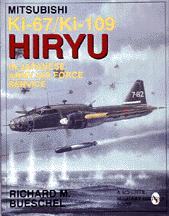 On of the few English language books on the KI-67 available from Schiffer Publishing. A bit thin compared to Mr. Bueschels other volumes but a valuable reference none the less.
On of the few English language books on the KI-67 available from Schiffer Publishing. A bit thin compared to Mr. Bueschels other volumes but a valuable reference none the less.
 VintagePostcards.com The source for the WWII Japanese Commemorative
Postcards on this page.
VintagePostcards.com The source for the WWII Japanese Commemorative
Postcards on this page.

 Mark Kaisers excllent JAAF Web Page source of the unit structure organization chart.
Mark Kaisers excllent JAAF Web Page source of the unit structure organization chart. 
 Weapons of War Japanese Aircraft Site Source of Ki-9 Ki-17 Ki-27 data
Weapons of War Japanese Aircraft Site Source of Ki-9 Ki-17 Ki-27 data 



Source of the K5Y1 Photo
 Memories of Ki-9 Spruce and Primary Flight Training at Maebashi Airfield, 1943-44
Memories of Ki-9 Spruce and Primary Flight Training at Maebashi Airfield, 1943-44

 KI-67 Art work link
KI-67 Art work link

 KI-67 Specifications and History link
KI-67 Specifications and History link

 RODS WAR BIRDS PAGES OF KI-67 Photos ( source empty Cockpit photo)
RODS WAR BIRDS PAGES OF KI-67 Photos ( source empty Cockpit photo) 
Kusunoki Web link
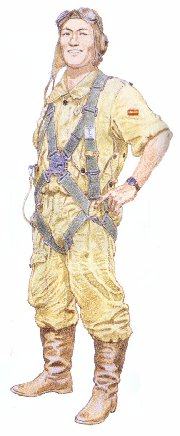 The Summer Uniform of a JAAF Pilot.
The Summer Uniform of a JAAF Pilot.
Links
 . Bye Bye Black SheepMike Kawato's life and war
. Bye Bye Black SheepMike Kawato's life and war
 Japanese Pilot Stories Lt Iki and the HMS Repulse
Japanese Pilot Stories Lt Iki and the HMS Repulse
 Avaition Archive TC Kinneys Avaition Archive Attack section.
Avaition Archive TC Kinneys Avaition Archive Attack section.
 Wesleyan Kamikaze research project
Wesleyan Kamikaze research project
 Japanese Pilot StoriesFrom Wings of the Sun
Japanese Pilot StoriesFrom Wings of the Sun
 Japanese Aircraft in WWIIAircraft of the Japanese Airforces .
Japanese Aircraft in WWIIAircraft of the Japanese Airforces .
 Japanese Airforces LinksLots of links here to Yahoo Japan
Japanese Airforces LinksLots of links here to Yahoo Japan
 Japanese Airforces Internet Museum of K. KatohJAAF & JNAF information
Japanese Airforces Internet Museum of K. KatohJAAF & JNAF information
 Japanese Airforces KI-51 photos Site owner unknown
Japanese Airforces KI-51 photos Site owner unknown
 Arawasi Web site with great links to Japanese models, books, and links
Arawasi Web site with great links to Japanese models, books, and links
 HOBIC WEB SITE - Decals of IJAAF AND IJNAF
HOBIC WEB SITE - Decals of IJAAF AND IJNAF
 War Time Posters.
War Time Posters.
Some books on the subject


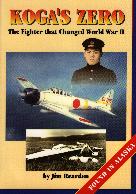




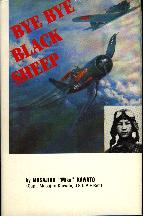
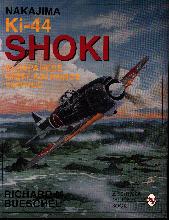

 The Yokosuku K5Y1 Willow. Over 5770 examples were produced of this trainer built for the Navy starting in 1934, more than any other type including a seaplane model.
The Yokosuku K5Y1 Willow. Over 5770 examples were produced of this trainer built for the Navy starting in 1934, more than any other type including a seaplane model.
This page hosted by 
Get your own Free Home Page
 Lt. Shuho Kurita & the White Tiger , Imperial Japanese Army Air Force 1941-45
Lt. Shuho Kurita & the White Tiger , Imperial Japanese Army Air Force 1941-45 


 Lt. Shuho Kurita & the White Tiger , Imperial Japanese Army Air Force 1941-45
Lt. Shuho Kurita & the White Tiger , Imperial Japanese Army Air Force 1941-45 


 Lt. Shuho Kurita was born in 1920 in a rural country town located in
Yamaguchi prefecture, western Japan. He is the third and
the last son of a Buddhist priest who was a head of the
small temple in the community of Kusunoki-machi, Asa-gun
(county), Yamaguchi Prefecture. ( to the east of Mine) Yamaguchi Prefecture is the westernmost prefecture on Honshu Island in Chugoku Region and is surrounded by the sea on three sides - namely the Sea of Japan on the north, the Sea of Hibikinada on the west, the Seto Inland Sea on the south - each of which offers its own beautiful scenery. In the inland area extends the karstic plateau, which represents Japan's well-known stalactic caves, gorges and natural parks with beautiful forests.
Lt. Shuho Kurita was born in 1920 in a rural country town located in
Yamaguchi prefecture, western Japan. He is the third and
the last son of a Buddhist priest who was a head of the
small temple in the community of Kusunoki-machi, Asa-gun
(county), Yamaguchi Prefecture. ( to the east of Mine) Yamaguchi Prefecture is the westernmost prefecture on Honshu Island in Chugoku Region and is surrounded by the sea on three sides - namely the Sea of Japan on the north, the Sea of Hibikinada on the west, the Seto Inland Sea on the south - each of which offers its own beautiful scenery. In the inland area extends the karstic plateau, which represents Japan's well-known stalactic caves, gorges and natural parks with beautiful forests.
 From Kuritas-san collection Ki-9 Basic trainers in the fall of 1939 at the Yongo Civil training school. These trainers have been maintained and are ready on the flight line. The Tachikawa Ki-9 Akatombo (Red Dragonfly)
Code Name: Spruce
Design Bureau: Tachikawa Hikoki K.K.
Manufacturer: Tachikawa Hikoki K.K.; Type: basic trainer
Crew: two
Engine: one Hitachi Ha-13a nine-cylinder air-cooled radial engine, rated at 350 hp
Max speed: 149 mph
Dimensions: wingspan 33 feet, 10 inches; length 24 feet, 8 inches; height 9 feet, 10 inches
Weight: empty 2,238 lbs; loaded 3,142 lbs
Armament: none
From Kuritas-san collection Ki-9 Basic trainers in the fall of 1939 at the Yongo Civil training school. These trainers have been maintained and are ready on the flight line. The Tachikawa Ki-9 Akatombo (Red Dragonfly)
Code Name: Spruce
Design Bureau: Tachikawa Hikoki K.K.
Manufacturer: Tachikawa Hikoki K.K.; Type: basic trainer
Crew: two
Engine: one Hitachi Ha-13a nine-cylinder air-cooled radial engine, rated at 350 hp
Max speed: 149 mph
Dimensions: wingspan 33 feet, 10 inches; length 24 feet, 8 inches; height 9 feet, 10 inches
Weight: empty 2,238 lbs; loaded 3,142 lbs
Armament: none  Kurita-san: "This is a photo of instructor Tanaka. His famous words were, You young men will be flying very expensive airplanes with many passengers on board. You must always be honest in piloting. Do you understand? That is all.
Kurita-san: "This is a photo of instructor Tanaka. His famous words were, You young men will be flying very expensive airplanes with many passengers on board. You must always be honest in piloting. Do you understand? That is all. 
 Kurita-san: "The starter truck we used to start the engine for the primary trainer Ki-17 Type 95 model 3
Kurita-san: "The starter truck we used to start the engine for the primary trainer Ki-17 Type 95 model 3
 Kurita-san studied and learned flying at Yonago Civil Flying
School the same time as Haruo Matsuura. He also stayed on
at the school to work as assistant flying instructor like
Haruo. In Yonago city, Shuho Kurita, for a while, shared
boarding house with Haruo.
Shuho Kurita at left, Haruo Matsuura center and Yoneda at right as assistant instructors before the war and military service. Shuho Kuritas best friend in the prewar years was Haruo Matsuura pictured standing before a K-9 trainer. They often talked of being commercial pilots. Haruo would die in combat, only Shuho would be one of the few IJAAF airmen to survive the war and realize their dream.
Kurita-san studied and learned flying at Yonago Civil Flying
School the same time as Haruo Matsuura. He also stayed on
at the school to work as assistant flying instructor like
Haruo. In Yonago city, Shuho Kurita, for a while, shared
boarding house with Haruo.
Shuho Kurita at left, Haruo Matsuura center and Yoneda at right as assistant instructors before the war and military service. Shuho Kuritas best friend in the prewar years was Haruo Matsuura pictured standing before a K-9 trainer. They often talked of being commercial pilots. Haruo would die in combat, only Shuho would be one of the few IJAAF airmen to survive the war and realize their dream.  Tachikawa Ki-55
Codename: Ida
Type: Two Seat Army Co-Operation & Advanced Trainer
Crew: Pilot &Trainee/Observer/Gunner sitting in tandem.
Design: Tachikawa Hikoki KK Design Team
Manufacturer: Tachikawa Hikoki Kabushiki Kaisha in Tachikawa
Powerplant: One 510 hp Hitachi Ha-13a 9-cylinder air-cooled radial engine.
Performance: Maximum level speed 216 mph at 5,905 ft. service ceiling 26,740 ft.
Range: 767 miles on internal fuel.
Weight: Empty 2,749 lbs with a maximum take-off weight of 3,660 lbs
Dimensions: Span 38 ft 8 1/2 in. length 26 ft 3 in. height 11 ft 11 1/4 in; wing area 215.29 sq ft
Tachikawa Ki-55
Codename: Ida
Type: Two Seat Army Co-Operation & Advanced Trainer
Crew: Pilot &Trainee/Observer/Gunner sitting in tandem.
Design: Tachikawa Hikoki KK Design Team
Manufacturer: Tachikawa Hikoki Kabushiki Kaisha in Tachikawa
Powerplant: One 510 hp Hitachi Ha-13a 9-cylinder air-cooled radial engine.
Performance: Maximum level speed 216 mph at 5,905 ft. service ceiling 26,740 ft.
Range: 767 miles on internal fuel.
Weight: Empty 2,749 lbs with a maximum take-off weight of 3,660 lbs
Dimensions: Span 38 ft 8 1/2 in. length 26 ft 3 in. height 11 ft 11 1/4 in; wing area 215.29 sq ft
 Kurita-san: "Instructors and assistants at Yonago. The Civil Pilot training school members taking a break after lunch. The training subject was "landing at a rough field" Lt. Kurita took this photo, 4th from the left is the instructor Tanaka and the rest are all assistants 18 to 21 years old. This photo was taken in the fall of 1939 "
Kurita-san: "Instructors and assistants at Yonago. The Civil Pilot training school members taking a break after lunch. The training subject was "landing at a rough field" Lt. Kurita took this photo, 4th from the left is the instructor Tanaka and the rest are all assistants 18 to 21 years old. This photo was taken in the fall of 1939 "
 Nakajima Ki-27 (Code names Nate)
Type:
Single-seat fighter, all-metal construction, fabric-covered control surfaces.
Crew 1 Pilot,
Powerplant:
One Nakajima Ha-1a nine-cylinder air-cooled radial engine, rated at 710 hp for take-off and 650 hp at 6,560 ft.
Armament:
Two fuselage-mounted 7.7mm machine guns.
Dimensions, weights, and performance:
Wingspan, 37 ft. 1 ¼ in.;
length, 24 ft. 8 7/16 in.;
height, 10 ft. 7 15/16 in.;
wing area, 199.777 sq. ft.;
empty weight, 2,447 lb.;
loaded weight, 3,946 lb.;
wing loading, 19.75 lb./sq. ft.;
maximum speed, 292 mph at 11,480 ft.;
climb to 16,405 ft., 5 min. 22 sec.;
normal range, 390 miles;
maximum range, 1,060 miles.
Nakajima Ki-27 (Code names Nate)
Type:
Single-seat fighter, all-metal construction, fabric-covered control surfaces.
Crew 1 Pilot,
Powerplant:
One Nakajima Ha-1a nine-cylinder air-cooled radial engine, rated at 710 hp for take-off and 650 hp at 6,560 ft.
Armament:
Two fuselage-mounted 7.7mm machine guns.
Dimensions, weights, and performance:
Wingspan, 37 ft. 1 ¼ in.;
length, 24 ft. 8 7/16 in.;
height, 10 ft. 7 15/16 in.;
wing area, 199.777 sq. ft.;
empty weight, 2,447 lb.;
loaded weight, 3,946 lb.;
wing loading, 19.75 lb./sq. ft.;
maximum speed, 292 mph at 11,480 ft.;
climb to 16,405 ft., 5 min. 22 sec.;
normal range, 390 miles;
maximum range, 1,060 miles.  Kurita-san: "Training at Kagamigahara Air Base from December 1940 to March 1941 using active warplanes. We used the Type 97 light bomber for the training. "
Kurita-san: "Training at Kagamigahara Air Base from December 1940 to March 1941 using active warplanes. We used the Type 97 light bomber for the training. "
 Kurita-san: "A photo at right taken as I was coming home from training. This was a safe landing with a student and thank god it was safe again today. The shot was taken with my camera by my colleague, assistant instructor Kano. The photo was taken in the fall of 1939."
Kurita-san: "A photo at right taken as I was coming home from training. This was a safe landing with a student and thank god it was safe again today. The shot was taken with my camera by my colleague, assistant instructor Kano. The photo was taken in the fall of 1939."
 Kurita-san: "The instructor seen here at the left is no less than Rokuzo Katoh, later he joined the Army and was attached to the famous 64th Sentai. He was killed on January 17th 1942 in the skies of Sumatra. Students from the left are: Nishida (survived the war and lives in Yonago City.), Matsuoka (killed on active service Harbin Manchuria), Udono (survived the war and went to work for JAL post war), Hinohara (killed on active service over the China Sea) , Koyashiki (survived the war and lives in Kuyushu.)
Kurita-san: "The instructor seen here at the left is no less than Rokuzo Katoh, later he joined the Army and was attached to the famous 64th Sentai. He was killed on January 17th 1942 in the skies of Sumatra. Students from the left are: Nishida (survived the war and lives in Yonago City.), Matsuoka (killed on active service Harbin Manchuria), Udono (survived the war and went to work for JAL post war), Hinohara (killed on active service over the China Sea) , Koyashiki (survived the war and lives in Kuyushu.)
 Lt. Shuho Kurita at left Lt. Haruo Matsuura standing at right. Wearing their apprentice Army uniforms Shuho and his best friend Haruo had a memorial photo taken at a photo studio in Kumamoto, Kyushu, in May of 1941. Shuho Kurita is sitting and Haruo is standing. Kurita-san joined the army the same time Haruo did and
they were together in moving around from one air base to another
until the final training at Kumamoto.
Lt. Shuho Kurita at left Lt. Haruo Matsuura standing at right. Wearing their apprentice Army uniforms Shuho and his best friend Haruo had a memorial photo taken at a photo studio in Kumamoto, Kyushu, in May of 1941. Shuho Kurita is sitting and Haruo is standing. Kurita-san joined the army the same time Haruo did and
they were together in moving around from one air base to another
until the final training at Kumamoto.
 Prior to WWII western powers especially in the United States belittled the abilities of Japan as imitators unable to produce advanced aircraft or skilled aircrew. This 1941 article in Flying and Popular Aviation magazine indicates the prevailing feeling. Allied aircrews were in for a rude awakening, with fighter aircraft like the Ki-43 and others developed later in the war proving the equal of any allied designs. (Pre War Article Link)The Japanese were told their western opponents were materialistic, soft, would not stand up the Japanese fighting spirit and the war with them would end quickly. Both sides airmen entered the war completely underestimating the others abilities and resolve.
Prior to WWII western powers especially in the United States belittled the abilities of Japan as imitators unable to produce advanced aircraft or skilled aircrew. This 1941 article in Flying and Popular Aviation magazine indicates the prevailing feeling. Allied aircrews were in for a rude awakening, with fighter aircraft like the Ki-43 and others developed later in the war proving the equal of any allied designs. (Pre War Article Link)The Japanese were told their western opponents were materialistic, soft, would not stand up the Japanese fighting spirit and the war with them would end quickly. Both sides airmen entered the war completely underestimating the others abilities and resolve. 

 A photo of Lt. Shuho Kurita after he landed at Tachiarai for refueling en route to ferry a KI-43 from Tachikawa to Kuangtung, China in the winter of 1942. The KI-43 surprised the Allies. Often mistakenly called a Zero by the allied pilots who came up against it in South East Asia, it outclassed the Buffalo, P-40 Warhawk and Hurricanes in manuevarability and range. What it lacked was pilot protecting armor, self sealing fuel tanks and heavy enough machine guns. Allied tactics required them to use their heavier fighters in a diving pass, hit and run tactic. They were told to never mix it up with these aircraft.
A photo of Lt. Shuho Kurita after he landed at Tachiarai for refueling en route to ferry a KI-43 from Tachikawa to Kuangtung, China in the winter of 1942. The KI-43 surprised the Allies. Often mistakenly called a Zero by the allied pilots who came up against it in South East Asia, it outclassed the Buffalo, P-40 Warhawk and Hurricanes in manuevarability and range. What it lacked was pilot protecting armor, self sealing fuel tanks and heavy enough machine guns. Allied tactics required them to use their heavier fighters in a diving pass, hit and run tactic. They were told to never mix it up with these aircraft. 
 Kurita-san: "Ferrying Ki-43's from Sadohara to Peitung, Taiwan. I took a shot of my wingman, Hasegawa, over Amami-ohsima under a clear sky on day in 1943. Hasegawa, on May 24th, 1945, force landed on Kadena Airfield, Okinawa on a Tokkotai mission 'GIRETSU KUTEITAI'
carrying shock troops on his KI-21 Bomber. I pray for comrade Hasegawa.
Kurita-san: "Ferrying Ki-43's from Sadohara to Peitung, Taiwan. I took a shot of my wingman, Hasegawa, over Amami-ohsima under a clear sky on day in 1943. Hasegawa, on May 24th, 1945, force landed on Kadena Airfield, Okinawa on a Tokkotai mission 'GIRETSU KUTEITAI'
carrying shock troops on his KI-21 Bomber. I pray for comrade Hasegawa.

 Lt Suhuo Kurita Photographed in front of a Ki-43, model 3 at Kuangtung, China, in the summer of 1944. Nakijima Ki-431b
Lt Suhuo Kurita Photographed in front of a Ki-43, model 3 at Kuangtung, China, in the summer of 1944. Nakijima Ki-431b 
 Ki-67-I: Wingspan, 73 ft. 9 13/16 in.;
length, 61 ft. 4 7/32 in.;
Ki-67-I: Wingspan, 73 ft. 9 13/16 in.;
length, 61 ft. 4 7/32 in.; A weapon Lt. Kuritas KI-67 may have been armed with was an antiship missle. The Ki-147 Igo-A-1: was a large radio-guided missile was being designed late in the war specifically to be launched from the Ki-67. With a 800Kg warhead its impact would have been devastating. The program was dropped early in 1945 to concentrate the limited resources Japan had left on fighter production to combat the B-29 raids. A new missle variant was under development as the war ended. The KI-67 was also being used as a airborne radar ship. The land based radars Japan utilized were not very effective in detecting inbound raids at certain altitudes and ranges. The Japanese however were very effective in utilizing the undisciplined American radio chatter in predicting with a high degree of accuracy the timing and target on inbound raids.
A weapon Lt. Kuritas KI-67 may have been armed with was an antiship missle. The Ki-147 Igo-A-1: was a large radio-guided missile was being designed late in the war specifically to be launched from the Ki-67. With a 800Kg warhead its impact would have been devastating. The program was dropped early in 1945 to concentrate the limited resources Japan had left on fighter production to combat the B-29 raids. A new missle variant was under development as the war ended. The KI-67 was also being used as a airborne radar ship. The land based radars Japan utilized were not very effective in detecting inbound raids at certain altitudes and ranges. The Japanese however were very effective in utilizing the undisciplined American radio chatter in predicting with a high degree of accuracy the timing and target on inbound raids.
 What Lt. Kurita describes as his last photo of loving friend. KI-67 type 4 heavy bomber the White Tiger.
What Lt. Kurita describes as his last photo of loving friend. KI-67 type 4 heavy bomber the White Tiger.  January
23, 1945, all my air crew gathered in the air raid shelter of our
base under the weakly shining bare light bulbs, awaiting
for the order for the mission we were about to start. A staff officer explained that our Fourth Air Force in
the Philippines had been driven into a corner by fierce enemy
counter attacks, and the headquarters staffs are keenly
awaiting to be rescued
at Laoag, on the west coast of Northern Luzon. The officer continued 'There is
no radio communication with Laoag and no detail information
available, but we must carry out this mission no matter
what.' This means a 'Kamikaze rescue' as we may have to
land right in the middle of
the enemy surrounded airfield. The staff officer concluded
his explanation, and order, by saying 'You may have to
force land your plane at Laoag airfield. Do accomplish
the mission at all cost.'
January
23, 1945, all my air crew gathered in the air raid shelter of our
base under the weakly shining bare light bulbs, awaiting
for the order for the mission we were about to start. A staff officer explained that our Fourth Air Force in
the Philippines had been driven into a corner by fierce enemy
counter attacks, and the headquarters staffs are keenly
awaiting to be rescued
at Laoag, on the west coast of Northern Luzon. The officer continued 'There is
no radio communication with Laoag and no detail information
available, but we must carry out this mission no matter
what.' This means a 'Kamikaze rescue' as we may have to
land right in the middle of
the enemy surrounded airfield. The staff officer concluded
his explanation, and order, by saying 'You may have to
force land your plane at Laoag airfield. Do accomplish
the mission at all cost.' A P-38 Lightning.
A P-38 Lightning.
 With a small rising-sun flag in their hands, soldiers
started to appear from no where. Slowly taxiing as we had
no knowledge of the airfield's condition, the plane
suddenly stopped with a big noise, GOT-TAN. With engine
power up the plane doesn't even move! The plane's main gear
dropped into a crater and cannot move. The more we tried to move the
worse it got. If we keep trying we may end up in damaging
the propellers and we will never be airborne. We shut off the
engine and Warrant Officer Inoh and I got off the plane and found that
our right main landing gear sank into the crater made by an earlier
strafing attack.
With a small rising-sun flag in their hands, soldiers
started to appear from no where. Slowly taxiing as we had
no knowledge of the airfield's condition, the plane
suddenly stopped with a big noise, GOT-TAN. With engine
power up the plane doesn't even move! The plane's main gear
dropped into a crater and cannot move. The more we tried to move the
worse it got. If we keep trying we may end up in damaging
the propellers and we will never be airborne. We shut off the
engine and Warrant Officer Inoh and I got off the plane and found that
our right main landing gear sank into the crater made by an earlier
strafing attack. 
 A Consolidated PBY Catalina
All of a sudden, the pilot of the flying boat opened the
window and started to wave his hand at us. A red face
with oval sunglasses. It was my very, very first time to
look at an American pilot, and at this close distance. No, it
couldn't happen, this is the real battle ground, kill
or be killed. I ordered my rear gunner not to shoot. The
gunner shouted 'please Lt, let me shoot. It's the bogie.'
I repeated my order not to shoot. The gunner,
reluctantly, gave up.
A Consolidated PBY Catalina
All of a sudden, the pilot of the flying boat opened the
window and started to wave his hand at us. A red face
with oval sunglasses. It was my very, very first time to
look at an American pilot, and at this close distance. No, it
couldn't happen, this is the real battle ground, kill
or be killed. I ordered my rear gunner not to shoot. The
gunner shouted 'please Lt, let me shoot. It's the bogie.'
I repeated my order not to shoot. The gunner,
reluctantly, gave up. The flying boat, I believe, is either Consolidated PBY
Catalina, or Privateer. A few years ago, I had a U. S.
Navy pilot friend of mine, aboard USS Independence, check
to find the Captain of the flying boat thru U. S. Navy
Veterans Association, but there was no success. I'm
longing to find the chance to say, 'Thank you for saving
my life.'
The flying boat, I believe, is either Consolidated PBY
Catalina, or Privateer. A few years ago, I had a U. S.
Navy pilot friend of mine, aboard USS Independence, check
to find the Captain of the flying boat thru U. S. Navy
Veterans Association, but there was no success. I'm
longing to find the chance to say, 'Thank you for saving
my life.'





 [ Shortly before Kurume a road turns off to Tachiarai, today it is a sleepy town surrounded by rice fields and lush hills. The former site of the Tachiarai Air Force Base, thousands of pilots and other air force personnel were trained here before being sent to wars in Manchuria and the Pacific. Although the base was destroyed in B-29 bombing raids in April 1945, its name lives on as one of the places from which dozens of kamikaze missions were dispatched. A Kirin brewery stands on the original site today, but you can catch a vivid glimpse of history at nearby Tachiarai Peace Memorial. The memorial houses a small but diverse collection of materials. But the curators have tried hard not to glorify war, focusing instead on the countless lives that were lost. The displays of letters, photos and personal belongings of the barely adult pilots are incredibly touching. You can also see fascinating original U.S. reconnaissance photos, secret files regarding the attacks on the base that Kurita-san experienced first hand, a well-preserved "akatombo" practice biplane, and more. Recently, a 97-type fighter plane was added to the collection, after being discovered 2 years ago in Hakata Bay and restored.
The Nakajima Ki 27 "Nate" at the Tachiarai Peace Memorial Museum Link
[ Shortly before Kurume a road turns off to Tachiarai, today it is a sleepy town surrounded by rice fields and lush hills. The former site of the Tachiarai Air Force Base, thousands of pilots and other air force personnel were trained here before being sent to wars in Manchuria and the Pacific. Although the base was destroyed in B-29 bombing raids in April 1945, its name lives on as one of the places from which dozens of kamikaze missions were dispatched. A Kirin brewery stands on the original site today, but you can catch a vivid glimpse of history at nearby Tachiarai Peace Memorial. The memorial houses a small but diverse collection of materials. But the curators have tried hard not to glorify war, focusing instead on the countless lives that were lost. The displays of letters, photos and personal belongings of the barely adult pilots are incredibly touching. You can also see fascinating original U.S. reconnaissance photos, secret files regarding the attacks on the base that Kurita-san experienced first hand, a well-preserved "akatombo" practice biplane, and more. Recently, a 97-type fighter plane was added to the collection, after being discovered 2 years ago in Hakata Bay and restored.
The Nakajima Ki 27 "Nate" at the Tachiarai Peace Memorial Museum Link


 With a strong blast, I
thought for a minute that I lost two engines on my Ki-21.
Seconds later I found both engines were running safely. I
immediately passed through, with very very low altitude,
between the mountains east of the airfield and flew toward
Gan-nosu airfield for emergency landing. Just as quickly
as I landed, I opened the hatch, got out of the plane and
jumped into the trench.
With a strong blast, I
thought for a minute that I lost two engines on my Ki-21.
Seconds later I found both engines were running safely. I
immediately passed through, with very very low altitude,
between the mountains east of the airfield and flew toward
Gan-nosu airfield for emergency landing. Just as quickly
as I landed, I opened the hatch, got out of the plane and
jumped into the trench.  Kurita-san: "In april 1945 our crew photographed after a stop at Tachiarai for refueling on our way home to Ohta from Peitung Taiwan. From the left is Seto, Hosoya, Itoh and Kurita.
Kurita-san: "In april 1945 our crew photographed after a stop at Tachiarai for refueling on our way home to Ohta from Peitung Taiwan. From the left is Seto, Hosoya, Itoh and Kurita.


 Japans Air Force commanders during the war years commemorative postcard (Courtesy of VintagePostcards.com)
Japans Air Force commanders during the war years commemorative postcard (Courtesy of VintagePostcards.com)  Kurita-san: "I had my photo taken in front of Lt. Hinokis glorious plane. The famous Lt Hinoki of the 64th Sentai flew into Peitung Air Force Arsenal for repair of his KI-43
Kurita-san: "I had my photo taken in front of Lt. Hinokis glorious plane. The famous Lt Hinoki of the 64th Sentai flew into Peitung Air Force Arsenal for repair of his KI-43
 Kurita-san: "My senior pilot officer was Lt. Oda. He was attached to the Kagamigahara Transport Command, and later transferred to Tachikawa. Lt. Oda, in fact was the person who led me to Japan Airlines after the war. This photo was taken of him in a Ki-61 in early 1944.
Kurita-san: "My senior pilot officer was Lt. Oda. He was attached to the Kagamigahara Transport Command, and later transferred to Tachikawa. Lt. Oda, in fact was the person who led me to Japan Airlines after the war. This photo was taken of him in a Ki-61 in early 1944.
 Kurita-san: "My Colleague and friend Haruo who died in Malaya in early 1942. This was taken in the winter of 1940 with my old bellows type camera given to me by my uncle. "
Kurita-san: "My Colleague and friend Haruo who died in Malaya in early 1942. This was taken in the winter of 1940 with my old bellows type camera given to me by my uncle. "
 Lt Suhuo Kurita in his Army Officers uniform before checking into the Army Officers quarters in Pyongyang Korea en route from Tachikawa to Shengyang Manchuria ferrying a Ki-54 Type 1 twin engined advanced trainer in December 1942.
Lt Suhuo Kurita in his Army Officers uniform before checking into the Army Officers quarters in Pyongyang Korea en route from Tachikawa to Shengyang Manchuria ferrying a Ki-54 Type 1 twin engined advanced trainer in December 1942. 

 The original 1950's logo of Japan Airlines as the country started to rebuild after WWII. Mr Kurita and his friend Haruo Matsuura dreams were to have a career as airline pilots.
The original 1950's logo of Japan Airlines as the country started to rebuild after WWII. Mr Kurita and his friend Haruo Matsuura dreams were to have a career as airline pilots.

 BACK TO THE MAIN WWII MEMORIES HOME PAGE
BACK TO THE MAIN WWII MEMORIES HOME PAGE BACK TO MAIN PAGE
BACK TO MAIN PAGE 
 On of the few English language books on the KI-67 available from Schiffer Publishing. A bit thin compared to Mr. Bueschels other volumes but a valuable reference none the less.
On of the few English language books on the KI-67 available from Schiffer Publishing. A bit thin compared to Mr. Bueschels other volumes but a valuable reference none the less.
 VintagePostcards.com The source for the WWII Japanese Commemorative
Postcards on this page.
VintagePostcards.com The source for the WWII Japanese Commemorative
Postcards on this page.

 Mark Kaisers excllent JAAF Web Page source of the unit structure organization chart.
Mark Kaisers excllent JAAF Web Page source of the unit structure organization chart. 
 Weapons of War Japanese Aircraft Site Source of Ki-9 Ki-17 Ki-27 data
Weapons of War Japanese Aircraft Site Source of Ki-9 Ki-17 Ki-27 data 



 Memories of Ki-9 Spruce and Primary Flight Training at Maebashi Airfield, 1943-44
Memories of Ki-9 Spruce and Primary Flight Training at Maebashi Airfield, 1943-44

 KI-67 Art work link
KI-67 Art work link

 KI-67 Specifications and History link
KI-67 Specifications and History link

 RODS WAR BIRDS PAGES OF KI-67 Photos ( source empty Cockpit photo)
RODS WAR BIRDS PAGES OF KI-67 Photos ( source empty Cockpit photo) 
 The Summer Uniform of a JAAF Pilot.
The Summer Uniform of a JAAF Pilot.  . Bye Bye Black SheepMike Kawato's life and war
. Bye Bye Black SheepMike Kawato's life and war  Japanese Pilot Stories Lt Iki and the HMS Repulse
Japanese Pilot Stories Lt Iki and the HMS Repulse  Avaition Archive TC Kinneys Avaition Archive Attack section.
Avaition Archive TC Kinneys Avaition Archive Attack section.  Wesleyan Kamikaze research project
Wesleyan Kamikaze research project  Japanese Pilot StoriesFrom Wings of the Sun
Japanese Pilot StoriesFrom Wings of the Sun Japanese Aircraft in WWIIAircraft of the Japanese Airforces .
Japanese Aircraft in WWIIAircraft of the Japanese Airforces . Japanese Airforces LinksLots of links here to Yahoo Japan
Japanese Airforces LinksLots of links here to Yahoo Japan Japanese Airforces Internet Museum of K. KatohJAAF & JNAF information
Japanese Airforces Internet Museum of K. KatohJAAF & JNAF information Japanese Airforces KI-51 photos Site owner unknown
Japanese Airforces KI-51 photos Site owner unknown Arawasi Web site with great links to Japanese models, books, and links
Arawasi Web site with great links to Japanese models, books, and links  HOBIC WEB SITE - Decals of IJAAF AND IJNAF
HOBIC WEB SITE - Decals of IJAAF AND IJNAF  War Time Posters.
War Time Posters. 









 The Yokosuku K5Y1 Willow. Over 5770 examples were produced of this trainer built for the Navy starting in 1934, more than any other type including a seaplane model.
The Yokosuku K5Y1 Willow. Over 5770 examples were produced of this trainer built for the Navy starting in 1934, more than any other type including a seaplane model.